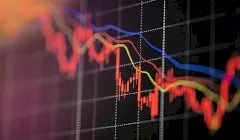Invest
Bond and share investors may shrug off RBA’s rate hike
As mortgage holders reel from the prospect of having to reach deeper into their hip pockets to make bigger repayments following the Reserve Bank of Australia’s (RBA) interest rate hike from 0.1 per cent to 0.35 per cent, another group is touted to potentially weather the storm in a way that’s unexpected.
Bond and share investors may shrug off RBA’s rate hike
As mortgage holders reel from the prospect of having to reach deeper into their hip pockets to make bigger repayments following the Reserve Bank of Australia’s (RBA) interest rate hike from 0.1 per cent to 0.35 per cent, another group is touted to potentially weather the storm in a way that’s unexpected.

According to asset management firm Gryphon Capital Investments, that group is fixed-income investors, who tend to be focused on investments like government and corporate bonds, and historically can be vulnerable to bond price falls if interest rates go up.
But Gryphon co-founder and CIO Ashley Burtenshaw feels that the RBA’s rate hike has prompted income investors to determine how to obtain reliable and consistent income with “defensive characteristics” in the rising interest rate environment.
And with many fixed-income investors firmly attached to residential mortgage-backed securities (RMBS), a form of bond that’s backed by the interest paid on residential home loans, Mr Burtenshaw said Gryphon’s data confirms the RBA’s findings that rate rises will not impact RMBS investors as much as the market may anticipate.
Mr Burtenshaw’s assessment may come as a relief for fixed-income investors, as he said RMBS offer an advantage over bonds as, while they are similar in structure, they are floating rate notes.

“This means that the income investors receive from an RMBS investment increases as interest rates increase,” Mr Burtenshaw said.
He said RMBS also sit higher in the capital structure and consequently issuers are required to pay these obligations in full ahead of senior unsecured bank debt, hybrids or dividends, providing additional security.
“Our in-depth and specialist focus on the domestic mortgage landscape reveals a level of certainty around borrower affordability and we see no reason why RMBS can’t continue to prosper in delivering the highest comparative returns for the risks involved for income investors,” he said.
Mr Burtenshaw also offered a good outlook for households holding mortgages, noting that the average Australian home loan payee is 2.1 years ahead of their mortgage payments.
“This means that they could miss over two years of mortgage payments and still be current with their mortgage,” he said.
The RBA also released its own Financial Stability Review (RSR) in April, demonstrating a high level of attention on the impact of rate rises on the housing market.
According to the review, most borrowers are well positioned to weather rate increases having built up substantial overpayments on their loans during the pandemic, citing “strength in household balance sheets has been underpinned by high savings, the strong labour market and rising house prices”.
Share market impacts
The share market also has the potential to feel the impact of the RBA’s rate hikes, but due to historical variables in how rates have interacted with shares, AMP chief economist Dr Shane Oliver cautioned against hitting the panic button just yet.
“There is an ambiguous relationship between rising interest rates and the Australian share market,” Dr Oliver said.
“While higher rates place pressure on share market valuations by making shares appear less attractive, early in the economic recovery cycle this impact is offset by still improving earnings growth,” he said.
Although Dr Oliver noted that sometimes rising interest rates have been bad news for shares, such as in 1994, other times have demonstrated the opposite effect, such as in 2003 and 2007 when shares followed the upward trajectory set by interest rates, followed by a fall in shares in 2008 after multiple rate hikes over several years and the impact of the Global Financial Crisis.
Dr Oliver also noted that rising rates from a low base, as is the case now, are normally not initially bad for shares, as they accompany improving economic conditions.
“Rising interest rates are only really a major problem for shares when rates reach onerous levels (i.e. above “normal”), contributing to an economic downturn, e.g. in 1981 to early 1982, late 1989 and in late 2007, to early 2008,” Dr Oliver said.
He said it becomes a problem when rate hikes are aggressive, as in 1994 when the cash rate was increased from 4.75 per cent to 7.5 per cent in four months.
Dr Oliver also noted that if the RBA cash rate rises to 1.5 per cent by the end of the year, deposit rates would still be less than 2 per cent, “so they will still be low relative to the grossed-up dividend yield on shares of around 5.5 per cent leaving shares relatively attractive”.
Although Dr Oliver’s outlook for the share market is relatively optimistic, if cash rates maintain a restrained upward trend, with a potential rise to 1.5 per cent by the end of the year “unlikely on its own to derail the cyclical bull market in shares,” he warned that an environment of rate hikes will likely result in a “continued period of volatility for shares”.

Shares
DREST gears up for innovation with the appointment of new co-CEO and CTO
Luxury fashion and lifestyle mobile game DREST has announced significant leadership changes as it prepares for an exciting phase of development and expansion. Read more

Shares
Hope for investors scared by share and crypto crashes
As share markets and cryptocurrency take a beating following the tightening of monetary policy across the world, investors are contemplating their next move. Read more

Shares
Cannon-Brookes tries to block AGL demerger
Mike Cannon-Brookes is not giving up on AGL after the latter announced 15 June as the date of the demerger vote. Read more

Shares
Qantas set to acquire Alliance Aviation
The two airlines have entered into a scheme implementation deed. Read more

Shares
How to buy Shares: A beginner’s guide in 2022
So you want to get in on the stock market action? Congratulations, that’s an exciting step! But first, there are a few things you should know before you buy your first shares. Read more

Shares
Elon Musk chokes up on bid to swallow Twitter
The battle of the bird has intensified over the last week, as Tesla and SpaceX founder Elon Musk has ramped up his aggressive campaign to buy the entirety of social media giant, Twitter. Read more

Shares
How to Make Money in Short Selling
What is short selling? There is a common practice for people who actively trade in the stock market, which is to “buy low and sell high”, but what if you can still make money by doing the opposite? Read more

Shares
Tesla boss becomes biggest Twitter shareholder
Elon Musk, head of Tesla Inc. and the world's wealthiest individual, has swallowed up a bundle of shares in the social media giant, Twitter. Read more

Shares
DREST gears up for innovation with the appointment of new co-CEO and CTO
Luxury fashion and lifestyle mobile game DREST has announced significant leadership changes as it prepares for an exciting phase of development and expansion. Read more

Shares
Hope for investors scared by share and crypto crashes
As share markets and cryptocurrency take a beating following the tightening of monetary policy across the world, investors are contemplating their next move. Read more

Shares
Cannon-Brookes tries to block AGL demerger
Mike Cannon-Brookes is not giving up on AGL after the latter announced 15 June as the date of the demerger vote. Read more

Shares
Qantas set to acquire Alliance Aviation
The two airlines have entered into a scheme implementation deed. Read more

Shares
How to buy Shares: A beginner’s guide in 2022
So you want to get in on the stock market action? Congratulations, that’s an exciting step! But first, there are a few things you should know before you buy your first shares. Read more

Shares
Elon Musk chokes up on bid to swallow Twitter
The battle of the bird has intensified over the last week, as Tesla and SpaceX founder Elon Musk has ramped up his aggressive campaign to buy the entirety of social media giant, Twitter. Read more

Shares
How to Make Money in Short Selling
What is short selling? There is a common practice for people who actively trade in the stock market, which is to “buy low and sell high”, but what if you can still make money by doing the opposite? Read more

Shares
Tesla boss becomes biggest Twitter shareholder
Elon Musk, head of Tesla Inc. and the world's wealthiest individual, has swallowed up a bundle of shares in the social media giant, Twitter. Read more










